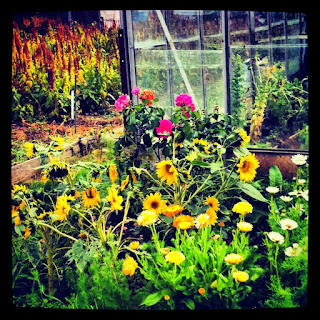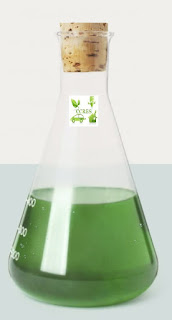Recently I visited Sheffield. I visited because Ron Finley, of Gangsta Gardening fame was visiting Sheffield to give a talk and Nigel Dunnett, of Pictorial Meadows fame, had alerted me to that and I had immediately booked a ticket, as I was also invited to an evening event around Guerrilla/community gardening later on in the week. This gave me the opportunity to spend 3 days in Sheffield finding out what was going on in the community sphere up there. What I didnt know was that Nigel had arranged for me to spend 3 days actually with Ron and the team, visiting several community based projects and meeting some people who in all honesty, have blown my socks off with their commitment not just to particular community projects but to the communities themselves.
Anyway, I digress a tad, and there will be further pieces about the community spaces I visited and how amazed I was by them. The point of this piece is to talk about the visit we took to a patch of land that will become Love Square.
In all cities there are pieces of land that are unseen. They are spaces people use everyday, whilst looking at their mobile phones, listening to music, thinking about a million other things, and they get walked through by people with their heads down, ignoring the environment and the space they are using on a daily basis. Standing on the site that Love Square will be in, an old bus and tram exchange in West Bar, we witnessed just that behaviour. As Ron did a piece to camera, people trundled through, heads down, barely even taking in that someone was filming there, let alone looking at the space they were using, and probably used once or twice every day due to its location as part of a transit route throught the city for pedestrians.
So the plan for Love Square is to create a space where people stop. A space that shows best practise of urban space that otherwise just becomes wilderness. A cafe in a shipping container, gardens, lawns and meadows and Grow Wild Modules filled with meadow planting and trees. A space for people to stop, breathe, socialise, read, be quiet or be loud. But mostly a space that people love and that shows people love back. A space that changes the community.
Working in Bristol on a very similar project, The Bearpit, a sixties sunken roundabout with anti social behaviour issues and a reputation it frankly rarely deserves, I have seen at first hand how this type of change of use can work, if at the moment on a far smaller scale. We recently, alongside the girls at the Bearpit Social cafe, whose home is a shipping container, planted up some bright containers with wild flowers as part of the Grow Wild project. The containers double as seating and within moments of the planting being finished the space was being used by people, sitting, meeting, drinking tea and just being. The Bearpit space is ongoing and will end up with forest garden, urban art and more businesses running from more shipping containers. A space that was avoided becoming a destination, a stop off point, a place that feels love and gives love to its community.
Both these projects are part of Kew and the National Lotterys Grow Wild campaign. The difference is that Love Square needs your vote as it is one of five projects that is in the final to win £120k in order to make its vision become reality. My belief is that in order for us to make city centres feel loved and encourage these spaces to be used and therefore kept well by the groups looking after them, these projects need to be seen as models of best practice. They are bringing biodiversity into the city centres, encouraging people to engage with nature, plants and the natural environment and ensuring that place is accessible to everyone. As more and more of us live in the urban landscape, with an estimated 70% expected to live in cities by 2050, these spaces will become more and more vital, both as green lungs but also as spaces where people can volunteer and garden themselves.
Below is a link to the Love Square site and the link to the vote will be added as soon as its live. Imagine the difference this type of planting and use of space would make to a town or city near you, and please vote for Love Square. It is, quite simply, what the future of our cities should look like.
For more info on Love Square and how it will look once the project is complete, here is the link to its webpage. Please take a look and see what an enormous difference this would make to the people of Shefield, but also to us all as we try to change our inner cities from concrete jungles to spaces that are well designed as urban landscapes. And please vote from October 7th-the decision is down to you.
Here is the link to vote
Read more
Anyway, I digress a tad, and there will be further pieces about the community spaces I visited and how amazed I was by them. The point of this piece is to talk about the visit we took to a patch of land that will become Love Square.
In all cities there are pieces of land that are unseen. They are spaces people use everyday, whilst looking at their mobile phones, listening to music, thinking about a million other things, and they get walked through by people with their heads down, ignoring the environment and the space they are using on a daily basis. Standing on the site that Love Square will be in, an old bus and tram exchange in West Bar, we witnessed just that behaviour. As Ron did a piece to camera, people trundled through, heads down, barely even taking in that someone was filming there, let alone looking at the space they were using, and probably used once or twice every day due to its location as part of a transit route throught the city for pedestrians.
So the plan for Love Square is to create a space where people stop. A space that shows best practise of urban space that otherwise just becomes wilderness. A cafe in a shipping container, gardens, lawns and meadows and Grow Wild Modules filled with meadow planting and trees. A space for people to stop, breathe, socialise, read, be quiet or be loud. But mostly a space that people love and that shows people love back. A space that changes the community.
Working in Bristol on a very similar project, The Bearpit, a sixties sunken roundabout with anti social behaviour issues and a reputation it frankly rarely deserves, I have seen at first hand how this type of change of use can work, if at the moment on a far smaller scale. We recently, alongside the girls at the Bearpit Social cafe, whose home is a shipping container, planted up some bright containers with wild flowers as part of the Grow Wild project. The containers double as seating and within moments of the planting being finished the space was being used by people, sitting, meeting, drinking tea and just being. The Bearpit space is ongoing and will end up with forest garden, urban art and more businesses running from more shipping containers. A space that was avoided becoming a destination, a stop off point, a place that feels love and gives love to its community.
Both these projects are part of Kew and the National Lotterys Grow Wild campaign. The difference is that Love Square needs your vote as it is one of five projects that is in the final to win £120k in order to make its vision become reality. My belief is that in order for us to make city centres feel loved and encourage these spaces to be used and therefore kept well by the groups looking after them, these projects need to be seen as models of best practice. They are bringing biodiversity into the city centres, encouraging people to engage with nature, plants and the natural environment and ensuring that place is accessible to everyone. As more and more of us live in the urban landscape, with an estimated 70% expected to live in cities by 2050, these spaces will become more and more vital, both as green lungs but also as spaces where people can volunteer and garden themselves.
Below is a link to the Love Square site and the link to the vote will be added as soon as its live. Imagine the difference this type of planting and use of space would make to a town or city near you, and please vote for Love Square. It is, quite simply, what the future of our cities should look like.
 |
| Ron and Nigel at what will be Love Square |
 |
| Imagine this land designed into a useable space. |
For more info on Love Square and how it will look once the project is complete, here is the link to its webpage. Please take a look and see what an enormous difference this would make to the people of Shefield, but also to us all as we try to change our inner cities from concrete jungles to spaces that are well designed as urban landscapes. And please vote from October 7th-the decision is down to you.
Here is the link to vote
 |
| The future of our cities? Lets hope so!! |

 It generally takes 5 to 6 years for a bamboo plant to mature. You can really give your desired shape by little bit of pruning. Cut just above the node. Depending on the size of the branch you want to prune use a chainsaw or a simple knife. There is very little chance that you can damage the plant by pruning. So don’t be hesitant.
It generally takes 5 to 6 years for a bamboo plant to mature. You can really give your desired shape by little bit of pruning. Cut just above the node. Depending on the size of the branch you want to prune use a chainsaw or a simple knife. There is very little chance that you can damage the plant by pruning. So don’t be hesitant.





 Raising chickens or ducks etc is it self a fun activity. The experience of waking up in the morning with a rooster crowing can be very pleasing. They provide a fresh supply to your food requirements. But there are more to eggs and meats;
Raising chickens or ducks etc is it self a fun activity. The experience of waking up in the morning with a rooster crowing can be very pleasing. They provide a fresh supply to your food requirements. But there are more to eggs and meats; 































.JPG)



